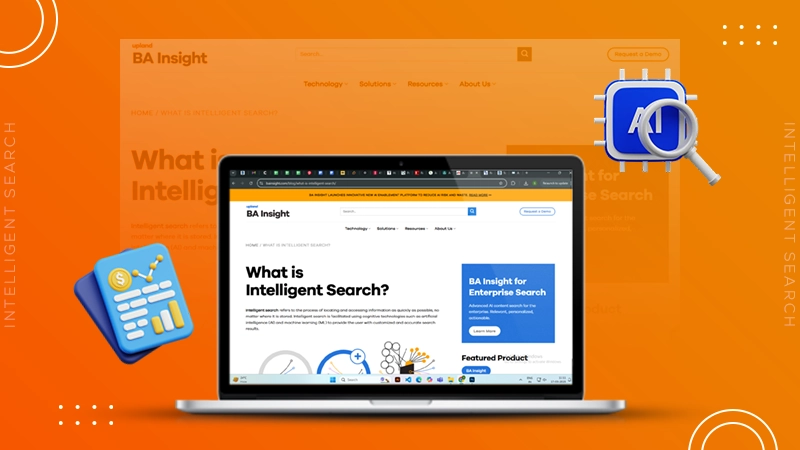Why and How to Get Ranked in Google’s People Also Ask Box; A Foolproof Guide
“It is not the answer that enlightens but the questions”
Said Eugene Jonesco.
Google knows what value questions hold, and thus it is the terminus for curious minds who need their thirst for information to be quenched. And, Marketers use this curiosity as an opportunity to promote their informative content. Admittedly, answering your searchers’ questions in a precise manner not only makes you a great marketer but also enhances your site’s visibility on the search engine.
Google has a dedicated section for commonly asked questions named “People Also Ask”. This list of questions helps searchers to find additional information that will support their research and help them have a better learning experience.
The PAA or People Also Ask listing is the most powerful tool for marketers to attain the quality traffic that is more likely to convert to faithful visitors. Thus, every webpage aims to secure a place in Google’s PAA box, but not all can.
We as a digital marketing firm have deciphered the hidden path that will lead your webpage directly to the “People Also Box”. Read till the end to get your website ranked for Google’s PAA section.
What is “People Also Ask”? An overview
February 2018 was the year when Google decided to incorporate quite a handy feature called “People Also Ask” on its SERP. With this, various search queries other than your original search appear on the screen and that helps you understand the topic in a better manner.
“People Also Ask” enables you to find additional information that supports your preliminary query. For instance, when you begin with a query “How to make pancakes?” Google will suggest a few other questions such as “How do you make pancakes with 3 steps?” and “How do you make original pancakes?” This way, you will be assisted with a few related questions that will help you make a thorough research.
Real-Time Stats of Google’s “People Also Ask” Feature
To give you an idea of the efficacy of PAAs, we are here revealing some of the well-established stats that are stated by none other than the giant Getstat.com powered by Moz.
- PAAs cover 20 percent of SERPs.
- The instances of PAAs on desktop and mobile are equal.
- The same PAA questions can arise for different keywords.
- Most of the time PAAs adjoin the same question with the same answer.
Table of Google PAAs Stats:
| FULL STUDY | CLOSE-UP | |
| Total keywords | 1,788 | 50 |
| Desktop & mobile keywords that produced a PAA | 364 | 50 |
| Number of desktop PAA questions | 615 | 195 |
| Number of unique desktop questions | 255 | 96 |
| Number of duplicate desktop questions | 360 | 99 |
These Five Facts about PAA (People Also Ask) Will Blow Your Mind:
If you want to know why and how PAAs are involved with time, these few universal facts will surely help.
- PAA can be found in different positions on the SERP. Here are a few examples of different keywords.


- PAA has No Limit and can be infinite in number.

- PAAs can include the video results.

- Most of the PAA questions are similar and can be repeated if you search for the same topics multiple times. You can always find featured snippets in PAA results.
- PAAs includes a “Feedback” feature to inform Google about the effectiveness of the PAA questions in your search results.

Why is it Important to Rank in Google’s “People Also Ask” boxes?
Although there is not much data available on the interaction status of users with the “People Also Ask” box, business owners never overlook PAAs while forming their SEO strategy. Google hasn’t shared the real numbers of users who are clicking on PAAs to get their queries resolved, but Backlink, a reliable third-party resource has revealed that 3% of searchers use the PAA box and click on the suggested questions.

Nevertheless, the count for PAA users varies for different queries; for some high-volume queries, the PAA interaction rate can go up to 13.6%.

But not every interaction turns into a click, because not all people who expand an answer would click the answer and access the webpage it is redirecting to. The rate of clicks vastly varies from the interaction rate; it has been found that the former one is quite lower. Being that said, the stats might sound discouraging but as a matter of fact, not only searchers but the SEO tribe can take huge benefit from PAAs, if used strategically.
Here how PAAs can benefit you:
- Google uses the same questions in the PAA box for various keywords and queries. Also, it uses the same source as the answer to the multiple queries with similar keywords. Therefore, getting a place in the PAA box can drive more traffic to the websites.
- There is a probability that your webpage will be used to answer multiple questions. So, if Google is using your webpage for tons of questions, the rate of impressions and clicks can boost instantly.
All and all, the “People also ask” box is meant to help the searchers by providing them additional relevant information and adding value to their time and efforts. However, the PAA box is equally advantageous for websites competing on the Google search engine.
Although we can’t decode Google’s algorithm and control Google’s search engine page elements, as digital marketers we can find ways to secure a place in the “People Also Ask” box.
Let’s walk through some of the most effective techniques that will help you hold a position in Google’s “People Also Ask” box.
How to Get A Place in Google’s “People Also Ask” box
There is no rocket science behind this, but it is not that easy though. The first principle is to find the relevant questions and add them to the on-page elements of your webpage. This will drastically enhance the chance of getting ranked in the PAA box.
Another trick is not to pick random questions. This will lead you to the PAA box only for the low-volume keywords or search queries. In this case, Google will only send limited traffic and that probably won’t do any good for you. This is why you need to optimize the relevant questions that include a plethora of high-volume keywords.
The question “What are the top 5 search engines?” appears for multiple keywords. All those keywords are mentioned here below:
All keywords collectively have a search volume of 157,450.
Now, as you are aware of the basics, let’s walk through the process to get ranked in the PAA box.
Step 1:Look for web pages that rank in PAA for plenty of keywords.
Step 2: Check the keyword rankings.
Step 3: Collect all the PAA questions the web pages are getting ranked for.
Step 4: Check your Eligibility to Rank in PAA Box
Step 5: Optimize your web page and Content
With these 7 steps, you can pave your path into the PAAs box. Therefore, we will now discuss all these steps comprehensively to provide you with complete insights.
- Look for web pages that rank in PAA for plenty of keywords.
The most difficult thing that you will encounter while forming a strategy for the PAA box, is finding all the keywords that Google uses to create specific questions. Therefore, it is better to focus on finding the questions that will cover a lot of keywords having high search volume.
The trick to finding such questions is to look for the web pages that rank for a plethora of keywords. For finding the keywords, use the Ahrefs’ Site Explorer followed by the “Top Pages” report. At last, look into the “Keyword” column and set search from high to low.

- Check the keyword rankings
Next, you need to extract the keywords ranking using again the Ahrefs’ Site Explorer and Organic Keywords section. You will get the list of keywords this page ranks for.
The keywords now needed to be filtered using these criteria:
- Keywords in positions <20.
- Keywords with a monthly search volume of at least 10.
- Keywords with PAA boxes in the results.

- Collect all the PAA questions the webpages are getting ranked for.
After you are done finding the keywords and web pages, you now need to find out all the popular questions that are associated with these pages. It is best to find the popular and commonly occurring questions. It is wise to optimize your webpage for those questions which are occurring for thousands of keywords.
We have already extracted high-volume keywords, just make sure you export CSV files for them by clicking on the “Export” option from the top-right corner.

Once exported, filter the keywords that contain “People Also Ask” in the “SERP Features” column.

- Check your Eligibility to Rank in PAA Box
The PAA box is usually occupied by the best-ranked websites that sit in the top 10 positions. For instance, while searching with the keyword “Top 10 tourist places in the world”, you will find only the top 10 most viewed websites in the PAA box.


Therefore, to get your webpage landed into Google’s PAA box, make sure that your website is ranking in the top 10 positions for the question or the keyword associated with the question. If not, make sure you first improve the overall ranking of your website or change the question you are optimizing your website for.
- Optimize your web page and Content
After finding the questions that people are searching the most for a specific set of keywords, you should now add them to your content and optimize your webpage. Make sure that your webpage includes answers to the question so that Google finds your webpage worthy of placing in the PAA box. If the question is not answered comprehensively, securing rank in the PAAs would not be a cakewalk. Therefore, it is suggested to add an answer that is rich in video, audio, stats, table, and images, so that a searcher can leave satisfied.
The two things that help you drive the most traffic are Quality and Relevance. You must follow the schema markup approach while forming the structure of your content as this will drastically improve your chance of getting featured in snippets or PAA.
Useful Tips to Quickly Get Ranked in PAA Box
When these 5 steps are combined with a few simple yet effective tips, the probability, and speed of getting ranked in PAAs doubles. So, look at all the points mentioned below and try to incorporate them while you are planning your strategy or optimizing your webpage for PAAs.
- Start with Long Tail Keywords
To stay ahead of the competition, you need to focus on easy to attain and longer tail keywords. Usually, the short or primary keywords are highly competitive. Therefore, use a phrase or multiple terms in your keywords and then find the related questions.
- Improve the Quality of Content
If you are targeting Google’s PAA box, make sure that your content is likable, relatable, and useful. Searchers like content that has the most accurate and precise answer to their query. To make your content more user-friendly, and easy to consume, make sure you consider these 4 elements:
- Paragraphs
- Tables
- Lists
- Images, Videos, and Infographics.
The question you are targeting must be answered well yet in a brief manner to keep the reader’s interest intact.
- Follow the FAQ Schema
If you want your website to be found in the “People Also Ask” box, make sure you add FAQs section for top questions. Make sure you write a statement answer for those questions by following 5 Ws (What, when, where, why, & who) and H (How) and sometimes Cs (Can & Could). The FAQ schema will add immense value to your content and improve the quality of the structure.
In a nutshell, this guide of ours will offer you immediate results, but if you want a helping hand to get ranked in Google’s “People Also Ask” section, we are always at our toes to render help.










